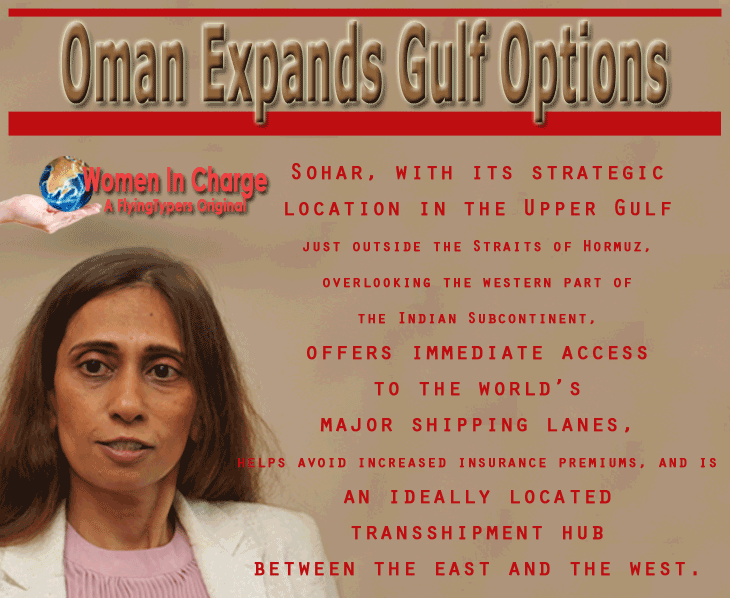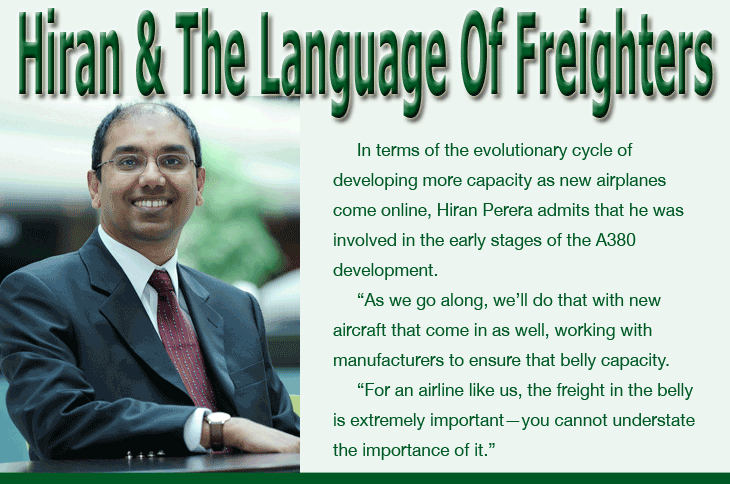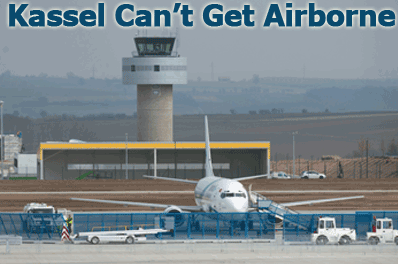
 he
pace of interest and investment
potential gets yet another player,
as one more well-heeled and
determined Gulf State has decided
to ambitiously drive itself
into further development of
world trade. he
pace of interest and investment
potential gets yet another player,
as one more well-heeled and
determined Gulf State has decided
to ambitiously drive itself
into further development of
world trade.
The Sultinate of Oman is at
work creating multi-modal infrastructure
whilst seeking investment in
building greater inter-connectivity
between rail, ship, and air.
For example, a new Muscat International
Airport (under construction
for completion in 2014) will
add capacity and 21st century
technologies to handle 12 million
passengers and a cargo terminal
throughput of 260,000 tons annually.
Oman
Airports Management Company
(OAMC), at work in Muscat, is
also expanding Salalah Airport,
the main gateway to the Dhofar
region in the south, enabling
the airport to handle one million
passengers and 100,000 tons
of cargo annually.
Construction
is also underway at four new
green field regional airports
in Sohar, Adam, Ad Duqm, and
Ras Al Hadd.
Once
these airports open for business
(now slated for 2014), Oman
will take a big step in further
developing itself into a gateway,
following a pattern well established
by others in the region.
As the
airport in Sohar is building,
developers of FreeZone Sohar,
the largest free trade zone
in Oman and one of the Gulf
Cooperation Council’s
(GCC) modern Free Trade Zones
adjoining the port of Sohar,
are leaving no stone unturned
to ensure that the ambitious
project is completed as quickly
as possible.
Located
around 230 km northwest of Muscat,
Sohar is the Sultanate’s
third largest city and an emerging
economic center. While the port
of Sohar, a deep-water industrial
seaport in operation since 2004,
is a key component of Sohar’s
expanding economy, the nearby
Freezone Sohar is becoming increasingly
vital as well. Managed
by the Sohar Industrial Port
Company (SIPC)—which also
operates the Port of Sohar—and
owned by the Sohar International
Development Company, a joint
venture between the Port of
Rotterdam in the Netherlands,
India-based SKIL Infrastructure,
and the Omani government, the
FZS covers an area of 4,500
hectares.
“Indeed,
you could say we are the new
kid around the block, but we
are determined, serious developers,”
stressed the Chief Operating
Officer of Free Zone Sohar,
Neelima Vyas.
The
FZS is quasi-government, which
owns 50 percent, with the remaining
50 percent owned by the Netherlands
government, represented by the
Port of Rotterdam.

In Mumbai
recently to attract investors
and ramp up trade interest in
Oman, Neelima Vyas elaborated
on the Sohar destination, saying:
“India
has emerged as a global economic
superpower and Indian companies
are increasingly looking to
supply their products to all
possible geographies.
“Sohar,
with its strategic location
in the Upper Gulf just outside
the Straits of Hormuz, overlooking
the western part of the Indian
Subcontinent, offers immediate
access to the world’s
major shipping lanes, helps
avoid increased insurance premiums,
and is an ideally located transshipment
hub between the east and the
west.
“Coupled
with the most modern warehousing
and logistics handling facilities,
with renowned globalcargo handlers
Steinweg for general cargo,
Odfjell/Oiltanking for liquid
cargo, and Hutchison Whampoa
OICT for containers, Sohar serves
as an excellent base to distribute
products to a customer base
of nearly two billion consumers.”
Commenting
on the proposed airport, the
COO said:
“Air
connectivity (with Sohar), is
already in place via roadway
infrastructure.
“The
airport under construction will
be operational next year—Q4—and
yes, it will be multi-modal.”
As for
the airport, Vyas said that
the “infrastructure will
compete for passengers as well
as for trade.
“We
believe that because there is
so much industrial base in that
area, it will have a lot of
cargo-related airport movement—especially
when you look at ad valorem
cargo.”
But
she was quick to point out:
“We
think that the passenger business
will have more impact in the
initial phase, including regional
air travel.
“I
would say give it five or ten
years before one can look at
a Dubai hub concept here,”
she emphasized.
“FZS
is being developed as a hub
for Middle East, North Africa,
and, of course, the Asian subcontinent
as well.”
She
pointed out “we are also
looking at railway development
here.”
“The
GCC has not had great connectivity
until today.
“The
plan for rail will be developed
in two phases.
“One
rail line will connect all the
GCC countries and eventually
another will connect the different
places in Oman with complete
north-south rail connectivity.
“The
port area has three major industrial
clusters already operational
and we have 40 million tons
per annum already moving out.
“We
have investments from practically
all over the world.
“You
could say, it is like a mini
United Nations, with a highly
skilled and cost competitive
labor force, freedom to hire
people from anywhere, and years
of incentives, including 100
percent foreign ownership and
free repatriation of capital
and profits.
“There
is also an offer for a corporate
tax holiday for 10 years, with
the possibility of extension
and relaxation in the level
of ‘Omanisation’
as means to attract big ticket
investments.”
Geoffrey
Arend/Flossie
|




 Shawn
McWhorter, the Chicago O’Hare-based
President of Nippon Cargo Airlines
(NCA) North America has some
big responsibilities.
Shawn
McWhorter, the Chicago O’Hare-based
President of Nippon Cargo Airlines
(NCA) North America has some
big responsibilities.



 he
pace of interest and investment
potential gets yet another player,
as one more well-heeled and
determined Gulf State has decided
to ambitiously drive itself
into further development of
world trade.
he
pace of interest and investment
potential gets yet another player,
as one more well-heeled and
determined Gulf State has decided
to ambitiously drive itself
into further development of
world trade.



